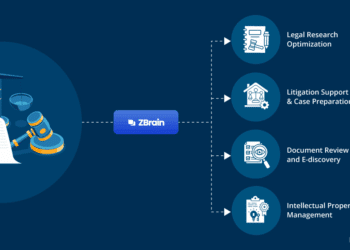Boosting web application security has never been more crucial, and understanding the SANS CWE Top 25 can play a pivotal role in enhancing it. This list identifies the most critical software weaknesses, providing a roadmap for developers and security professionals to fortify their web applications.
The Common Weakness Enumeration (CWE) is an essential part of this security process. By identifying and classifying vulnerabilities, CWE helps pinpoint the most pressing threats to web applications. This article will guide you through:
- An overview of CWE and its critical role in cybersecurity
- A regularly updated list highlights the most frequent and severe software security flaws.
- Comparing these vulnerabilities with those in the OWASP Top 10
- Effective strategies for enhancing web application security using the SANS CWE Top 25
Explore these sections to grasp the importance of implementing these strategies in your cybersecurity efforts.
Understanding CWE Common Weakness Enumeration
The CWE Common Weakness Enumeration is a structured list of software vulnerabilities aimed at improving software security. It helps developers and testers identify and categorize software weaknesses, which is vital for building stronger applications.
Here’s how CWE can enhance cybersecurity:
- Identification: CWE allows easy identification of vulnerabilities, making developers aware of potential threats.
- Categorization: By categorizing weaknesses, CWE helps prioritize security issues based on their severity.
Here are some typical vulnerabilities within the CWE framework:
- Injection Flaws: These occur when untrusted data gets injected into a web application, leading to breaches.
By familiarizing yourself with CWE and its significance, you’re well on your way to strengthening your web application’s defenses against potential threats.
Exploring the Common Weakness Enumeration Top 25
The Common Weakness Enumeration Top 25 is a valuable resource in the world of web application security. It identifies and ranks the most critical software vulnerabilities that can threaten applications. Understanding these vulnerabilities helps developers and security professionals focus their efforts on the most impactful areas.
Some key vulnerabilities in the CWE Top 25 include:
- SQL Injection: Allows attackers to interfere with queries that an application makes to its database.
- Cross-Site Scripting (XSS): Enables attackers to inject malicious scripts into web pages viewed by others.
- Path Traversal: Allows attackers to access files and directories that are stored outside the web root folder.
The impact of these vulnerabilities can be significant. For instance, SQL Injection can lead to unauthorized access to sensitive data, while XSS can compromise user privacy.
Various studies indicate that Cross-Site Scripting (XSS) is a consistently significant security risk for modern web applications. For instance, findings from web security projects frequently identify XSS as a common and critical vulnerability.
Comparing SANS CWE Top 25 and OWASP Top 10 Vulnerabilities
When comparing the SANS CWE Top 25 with the OWASP Top 10, several distinctions and similarities emerge. Both lists aim to improve web application security but focus on different aspects:
- Scope and Depth:
- SANS CWE Top 25: Offers a broader scope with a detailed view of software weaknesses.
- OWASP Top 10: Provides a more concise list, emphasizing the most common vulnerabilities.
- Target Audience:
- SANS list targets developers and security analysts seeking in-depth insights.
- OWASP list is aimed at both beginners and experts for a quick overview.
By understanding and utilizing both resources, developers can build more robust and secure applications that help protect against a wide array of web application vulnerabilities.

Enhancing Web Application Security Through Effective Strategies
When it comes to bolstering web application security, utilizing the SANS CWE Top 25 is an excellent starting point. By understanding and mitigating the most common vulnerabilities, you can significantly reduce risks and strengthen your defenses. Here’s how you can put these strategies into action:
Practical Steps to Use the SANS CWE Top 25
- Educate Your Team:
- Ensure everyone involved in your web application development is familiar with the SANS CWE Top 25 vulnerabilities.
- Regular training and up-to-date resources help maintain awareness.
- Regular Security Testing:
- Implement regular security testing to identify and fix vulnerabilities early.
- Employ both automated tools and manual reviews for comprehensive coverage.
- Resources dedicated to security tools often provide information on various methodologies and useful software.
- Adopt Secure Coding Practices:
- Encourage developers to follow secure coding standards to prevent vulnerabilities from being introduced.
- Code reviews and pair programming can be effective in maintaining code quality.
- Implement Rigorous Authentication Measures:
- Use strong, multi-factor authentication processes to enhance security.
- Regularly update authentication methods to combat evolving threats.
- Keep Systems and Software Updated:
- Regularly apply patches and updates to applications and servers.
- Outdated systems are more susceptible to exploitation.
- Data Protection:
- Encrypt sensitive data both at rest and in transit.
- Maintain data integrity with regular audits and monitoring.
- Conduct Penetration Testing:
- Conduct periodic penetration tests to simulate an attack from a malicious user’s perspective.
- Address vulnerabilities uncovered during these tests promptly.
By integrating these tactics with the SANS CWE Top 25 insights, you can create a robust strategy to protect your web applications from the most prevalent threats.
Cyber Security Glossary: Key Terms and Definitions
To effectively navigate web application vulnerabilities, it’s vital to understand key cybersecurity terms. Here’s a quick reference guide:
- Injection: A vulnerability that allows attackers to execute malicious code through user input. Common types include SQL and Command Injection.
- Authentication: The process of verifying the identity of a user, typically through credentials like passwords, tokens, and biometrics.
- Data Protection: Measures and controls to safeguard data from unauthorized access and corruption, including encryption and regulation adherence.
- Cross-Site Scripting (XSS): A flaw that enables attackers to inject scripts into web pages viewed by other users. It is often used to steal cookies or session tokens.
- Secure Socket Layer (SSL)/Transport Layer Security (TLS): Protocols for encrypting data transmitted over the internet to enhance privacy and protect information.
A comprehensive glossary can offer a more in-depth understanding of cybersecurity terminology. This resource can help you become more familiar with the language necessary for protecting your web applications.
By grasping these terms and definitions, you’ll be better equipped to identify and address potential security challenges in your web applications, strengthening your overall security posture.
Summary and Next Steps for Improved Security
Boosting web application security is crucial in today’s digital landscape. Here’s a quick recap of the key points covered in this article:
- SANS CWE Top 25 plays a significant role in identifying critical web application vulnerabilities, aiding organizations in fortifying their defenses.
- Understanding CWE is essential. It’s a valuable framework for categorizing software weaknesses, which helps in targeted security efforts.
- The Common Weakness Enumeration Top 25 provides an in-depth look at prevalent vulnerabilities. Analyzing their impact can guide effective security measures.
- Comparing SANS CWE Top 25 and OWASP Top 10 vulnerabilities highlights unique contributions to web security.
- Implement enhanced security strategies with practical steps and focusing on regular security testing.
Adherence to these guidelines enhances an organization’s cybersecurity posture. Continuously educating yourself about emerging threats and frameworks is key to maintaining strong defenses. Explore further through guides or services that match your security needs.
Explore Our Cybersecurity Solutions
We invite you to explore our range of cybersecurity solutions designed to bolster your web application security. Our offerings align perfectly with the strategies discussed and include:
- Comprehensive Security Assessments: Understand your current security posture with a detailed analysis.
- Cutting-edge Security Tools: Enhance your defenses with the latest in cybersecurity technology.
- Expert Consultation Services: Tailored advice from industry experts to guide your security strategy.
For more information or to discuss your specific needs, visit our service page or reach out to us through our contact details. Secure your web applications today to ensure a safer digital environment for your business.







